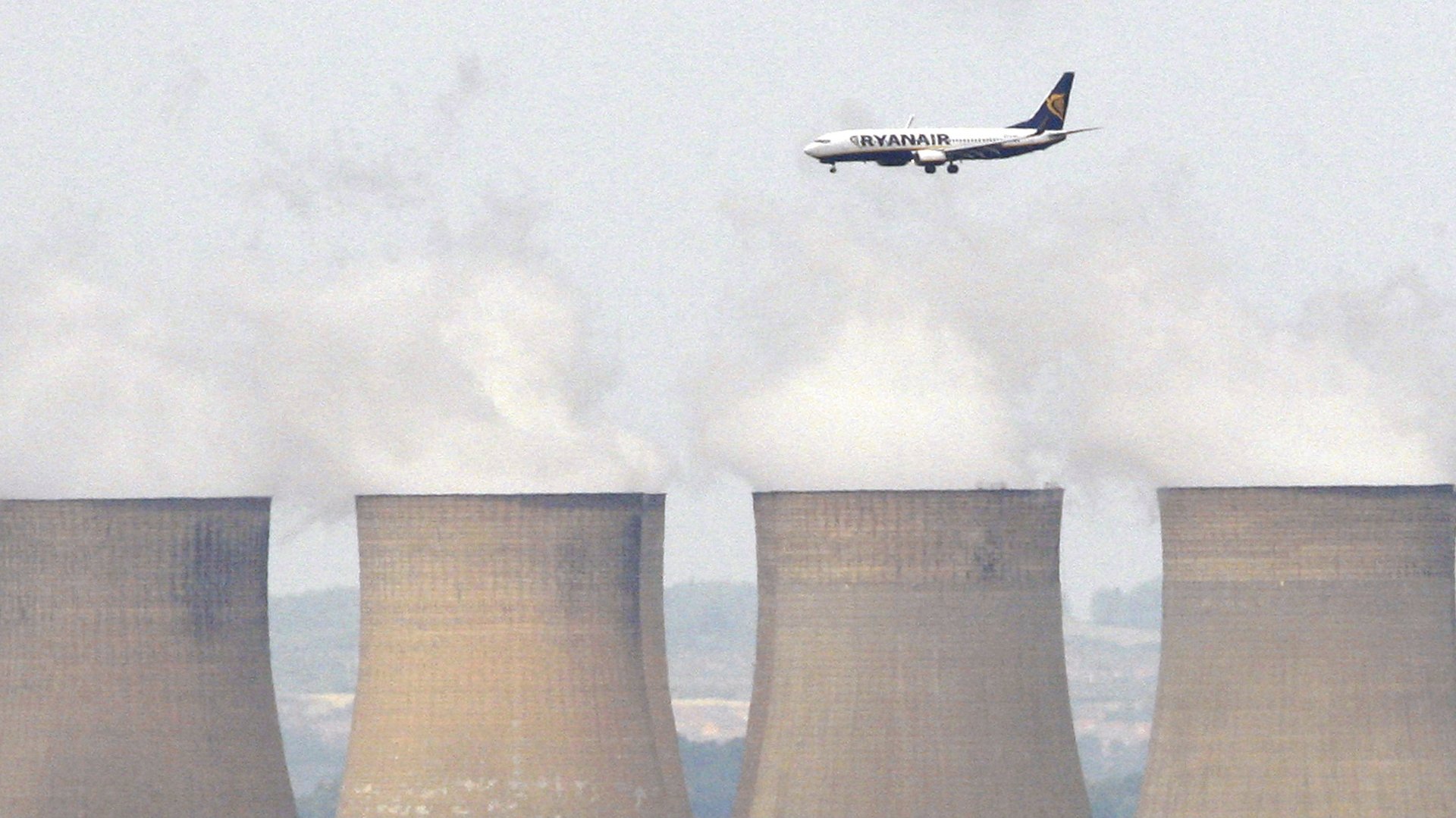Everyone’s least favorite airline says it’s also the most eco-friendly
The efforts by airlines to trumpet their eco-credentials generally fall into two categories. The first is visible in-cabin iniatives, such as Swedish airline SAS’s much-lauded waste reduction approach, and United’s compostable paper cups. The second is carbon offset programs, which encourage travelers to pay extra to offset the carbon emissions of their chosen itinerary.


The efforts by airlines to trumpet their eco-credentials generally fall into two categories. The first is visible in-cabin iniatives, such as Swedish airline SAS’s much-lauded waste reduction approach, and United’s compostable paper cups. The second is carbon offset programs, which encourage travelers to pay extra to offset the carbon emissions of their chosen itinerary.
But according to Ryanair’s chief marketing officer Kenny Jacobs, all travelers need to do to reduce their individual carbon emissions is fly on his airline. At Skift Forum Europe, a travel industry event held in Berlin on April 26, Jacobs told the audience that the low cost European airline is the “greenest airline in the world on a [carbon dioxide] emissions per passenger, per kilometer basis.”
To prove his claim, Jacobs noted that the carbon emissions of each passenger are driven by four main factors. The first is an airline’s load factor, or how many seats are occupied versus those left unfilled. The second is the age of the aircraft fleet, as newer planes are more fuel efficient. The third is whether or not the airline operates a hub-and-spoke or point-to-point route model (low-cost carriers like Ryanair and Southwest tend to fly direct from one destination to another, rather than connect their passengers through a regional hub.) The fourth is the manner in which the pilot flies the aircraft, such as the “green approach” landing technique—a less fuel intensive way to descend the aircraft—also pioneered by SAS.
As anyone who has braved the middle seat on a Ryanair flight will know, the carrier’s flights are more often than not very full, with an average load factor of 96%, according to Jacobs. Meanwhile, compared to a regional competitor like British Airways—which has an average fleet age of 13.8 years—Ryanair’s average fleet age is 6.8 years.
It’s hard to fact check Jacobs claim that Ryanair is the greenest airline without doing a comprehensive assessment of all the factors he mentioned for every airline. For a truly thorough analysis, one would also need to take into account some factors he didn’t mention, such as how much food is consumed onboard (as well as how it’s prepared) and non-aircraft related factors such as how the airline powers its data warehouse—all of which would affect an airline’s total carbon footprint.
But when it comes to the cutthroat business model Ryanair is known for, he has a point. Indeed, many of the business decisions that have continually led Ryanair to be one of the least-favored airlines in the world—namely, jamming as many passengers as possible onto cramped planes with draconian baggage requirements for flights as low as £9.99—have made them both profitable and, he claims, environmentally friendly.
As Jacobs put it with characteristic Irish bluntness: “We’ve got the youngest fleet in the world for two reasons: we’re the fastest growing airline and we’re low cost, mean bastards, so we want to have young aircraft because they’re cheaper to maintain and the engines use less fuel.”